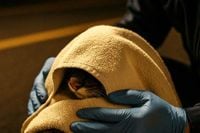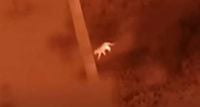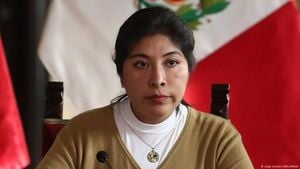For the first time in nearly six decades, the gates of Anyang Arboretum—nestled within Seoul National University in the city of Anyang—are set to swing open to the public this November. The move, announced on October 2, 2025, marks a historic moment for both local residents and the scientific community, as the arboretum, previously reserved for research and conservation, will welcome visitors eager to explore its sprawling 1,554-hectare grounds and more than 1,000 species of rare and endangered plants.
This development comes at a time of renewed interest in Korea’s ecological history, spurred in part by the rediscovery of detailed migratory bird birth records dating back to the late 1940s. These records, meticulously compiled by U.S. Army officer and ornithologist Lloyd Raymond Wolfe during his service in Korea from 1947 to 1948, have recently been brought back into the spotlight by collaborative research efforts between Jeju National University and the Jeju Birth and Death Records Office.
According to a report published by the National Birth and Death Records Office on September 17, 2025, Wolfe’s observations offer an extraordinary window into the breeding habits and migratory patterns of Korea’s avian population during a tumultuous era. His findings, originally published in the October 1950 edition of The Auk under the title “Notes on the birds of Korea,” include specific birth data for birds observed in locations such as Incheon, Suwon, Cheonmasan, and the southern district of Yeongnam. These records not only document the presence of birds but also provide intricate details about their nests, eggs, and breeding behaviors.
Wolfe’s research was nothing short of groundbreaking for its time. He described, for instance, discovering a nest on April 4, 1948, in Yeongnam, which was found in the family registry of Jeongseong—a detail that, while it sounds bureaucratic, underscores the thoroughness of his documentation. On another occasion, on April 16, 1948, Wolfe identified a bird birth record in Cheonmasan, though the nest itself was missing by the time of his visit. His records, which spanned from February 1947 to December 1948, paint a vivid portrait of the region’s avian life, including the movements and breeding habits of migratory birds.
One of the most remarkable aspects of Wolfe’s work was his attention to detail. The research includes measurements of nest sizes—approximately 90 meters in circumference and two meters in height—and egg sizes around 1.5 meters, although these figures are likely translation errors and should probably be centimeters. Still, the thoroughness of his notes is undeniable. Wolfe’s fieldwork, conducted during weekends and holidays due to limited transportation and other constraints, primarily focused on Gyeonggi Province and western Gangwon Province. Despite these limitations, his dedication resulted in the documentation of over 150 bird species, the collection of 125 specimens, and the donation of these invaluable samples to the U.S. National Museum.
Among the rare birds chronicled in Wolfe’s records is the critically endangered crested ibis, known in Korea as the “Gwangneung knaksae.” Wolfe described this bird as a “giant woodpecker,” noting, “This bird is reported to be very rare and endangered, but I was fortunate to find three breeding pairs.” He went on to explain that two of these pairs were located northwest of Seoul, while the third resided in a hidden valley northeast of the city, surrounded by towering fir trees. Wolfe’s encounters with these birds, particularly his observation of a male with a striking red crest, underscore the importance of preserving the habitats that have sheltered such species for centuries.
Fast forward to the present, and Wolfe’s legacy continues to inform contemporary conservation efforts. In July 2024, staff at the Jeju Wild Animal Rescue Center, in collaboration with the National Institute of Ecology’s Endangered Species Restoration Center, launched a new investigation into the presence of the endangered steppe eagle (Aquila nipalensis) on the slopes of Hallasan Mountain in Jeju. Their efforts were prompted by the rescue of a young eagle and subsequent sightings reported by local residents. In April 2025, researchers discovered a massive nest—measuring approximately two meters in diameter and 1.5 meters high—perched on a cliff about 90 meters above the ground. This find marked the first confirmed steppe eagle breeding site in Korea in 77 years, with the last such record dating back to Wolfe’s original work in 1948.
“Wolfe’s contributions serve as a bridge between the early days of ornithology in Korea and the more systematic research that began in the 1960s,” said Dr. Kang Seung-gu of the Endangered Species Restoration Center, as reported by the Energy Economy Newspaper. “We recently learned that the steppe eagle chick specimen donated by Wolfe is preserved at the Smithsonian Museum in the United States.”
Wolfe’s research methods, which combined hunting with scientific observation, reflected the norms of his era—a time when the concept of endangered species was not as clearly defined as it is today. While some might raise an eyebrow at the collection and export of eggs and specimens, it’s important to remember that such practices were standard for naturalists of the mid-20th century. The specimens Wolfe collected remain invaluable to researchers, providing genetic and morphological data that would otherwise be lost to history.
The recent resurgence of interest in Korea’s avian history has dovetailed with broader efforts to preserve and study the nation’s natural heritage. The opening of Anyang Arboretum is emblematic of this shift. Established in 1967 for the research and conservation of plant species, the arboretum has, until now, remained largely off-limits to the public. That’s about to change. According to Munhwa Ilbo, the city of Anyang and Seoul National University have finalized an agreement to not only open the arboretum but also to jointly host a grand opening ceremony and ensure the safety and accessibility of the grounds. Seoul National University will continue to manage the facilities for educational and research purposes, while Anyang city will handle visitor guidance and maintain order.
The timing couldn’t be better. The arboretum’s famed maple tree-lined paths are expected to reach their autumnal peak just as the gates open, offering visitors a spectacular display of seasonal color. More importantly, the arboretum is poised to become a hub for ecological education, where citizens can learn about both plant and animal conservation—including the migratory birds whose histories are now being pieced together from records old and new.
As Korea looks to the future, the fusion of historical research and contemporary conservation offers hope for the survival of its unique flora and fauna. The rediscovered records of Lloyd Raymond Wolfe, combined with the opening of previously secluded natural spaces, remind us that the past is never truly lost—it simply waits, sometimes for decades, to take flight again.





